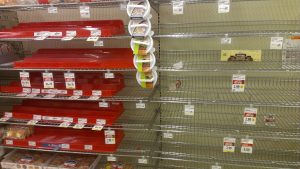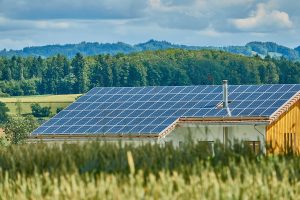Wildfire Smoke Takes a Toll on Jobs in New York City
New York City, known for its bustling streets, towering skyscrapers, and vibrant economy, is facing an unexpected challenge: the far-reaching impact of wildfire smoke. While wildfires have traditionally been associated with rural and forested areas, their effects are now being felt in urban centers like New York City. The smoke from these distant fires has seeped into the city, posing health risks and disrupting daily life. In this article, we will explore how the influx of wildfire smoke is affecting jobs in the Big Apple.
The Unseen Consequences
The visible consequences of wildfires, such as destruction of homes and habitats, are well-documented. However, the less visible but equally concerning impact of wildfire smoke is often overlooked. The smoke contains fine particulate matter, known as PM2.5, which can penetrate deep into the lungs and pose serious health risks. Prolonged exposure to PM2.5 can lead to respiratory issues, aggravated asthma symptoms, and other cardiovascular problems. Consequently, individuals are compelled to take precautionary measures to safeguard their health, leading to an array of challenges for businesses and workers.
Outdoor Industries Take a Hit
New York City is home to a vibrant outdoor industry, including restaurants with al fresco dining, food carts, and street vendors that line the bustling streets. However, with the arrival of wildfire smoke, these businesses have faced a significant decline in customers. People are reluctant to spend extended periods outdoors, opting to stay indoors where air quality can be better controlled. Consequently, establishments relying on outdoor seating and foot traffic have experienced a noticeable decrease in sales, leading to potential layoffs and financial strain.
Impacted Sectors
The negative impact of wildfire smoke extends beyond the outdoor industry. Construction sites, a vital part of New York City’s ever-changing skyline, have also faced challenges due to the health risks associated with smoke inhalation. With workers at risk, construction projects have experienced delays and decreased productivity, further straining an industry already grappling with labor shortages and rising costs.
In addition, the tourism sector, which heavily relies on visitors and travelers, has witnessed a decline in bookings and visitor footfall. The city’s iconic landmarks, cultural institutions, and entertainment venues have seen reduced attendance, impacting the revenue streams and potentially resulting in job losses in these sectors.
Office Environments and Indoor Air Quality
While indoor workplaces offer respite from the outdoor smoke, ensuring a healthy indoor environment has become a priority. Employers are investing in air purifiers, ensuring proper ventilation systems, and implementing guidelines to mitigate the impact of poor air quality. However, these measures come with additional costs, potentially straining budgets and limiting resources for job growth and employee benefits.
Remote Work as a Solution
One positive aspect that has emerged amidst the challenges is the increased adoption of remote work. Many employers have encouraged their employees to work from home to mitigate exposure to poor air quality and maintain productivity. The ability to work remotely has allowed businesses to continue operations while safeguarding employee health. However, this shift to remote work is not feasible for all sectors, particularly those that rely on physical presence and face-to-face interactions.
Conclusion
The wildfire smoke infiltrating New York City has far-reaching consequences that extend beyond the health risks to impact various industries and employment opportunities. From outdoor businesses suffering declining sales to indoor workplaces struggling with air quality concerns, the economic implications are significant. While measures such as remote work offer temporary solutions, they may not be viable for all industries. As the effects of climate change continue to manifest in unexpected ways, finding innovative solutions to protect jobs and mitigate the impact of wildfire smoke remains a critical challenge for New York City and other urban centers worldwide.





